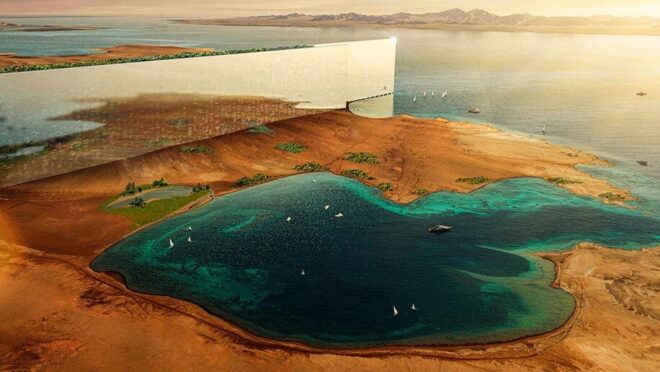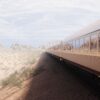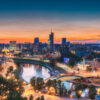Some call it the city of the future, while others are skeptical about its image. Check out the "gravity-free" town expected to grow in Saudi Arabia in the future. You've never seen anything like it!
The place named THE LINE is located between two mirrors. Yes, you heard right! It is designed to move away from the image of suburbs and skyscrapers rising into the sky. It is a single integrated structure, 170 km long, which could accommodate up to 9 million people. Sound like science fiction? Read on…
The city is being built in Tabuk province in northwestern Saudi Arabia. It combines the technologies of a smart city and at the same time functions as a tourist destination. It is located north of the Red Sea, east of Egypt across the Arabian Gulf and south of Jordan.
A new topography that creates urban life
The design of the city of the future explores its relationship to nature and the environment, also relies 100% on renewable energy sources and discourages the use of cars in traffic. The idea is behind the NEOM team, which imagined this type of structure in the desert of Saudi Arabia. If you wanted to travel the entire length of the city, it would take you as much as two hours by car, which is why the transport will be based on faster alternatives, with which you will cover the distance in no more than 20 minutes. It is a narrow populated strip that stretches only 200 m in width.
The project arose from the idea of establishing a city of the future, where there would be no pollution, no noise. For this purpose, they founded a "gravity-free city". As the company director says NEOM Tarek Qaddumi: “Gravity-free urbanism is a term we use to describe reduced dependence on the natural ground plane by creating multiple vertically organized levels in height. This would essentially build a new topography around which urban life is created."

Mixed use of the area
When designing, the creators also had sustainability in mind. THE LINE is said to have an incomparably smaller footprint on the environment than any conventional city with the same number of inhabitants. The use of the surface is also sustainable. If London spans 1,600 km2, THE LINE only needs 34 km2, even though they have roughly the same population (9 million). According to the NEOM team, the city of the future is an alternative to the systems known so far, which pose a much greater threat to the surroundings and the landscape, precisely because of the continuous increase in the population.
THE LINE rejects the idea of zoning and classified use of individual areas, as it bets on mixed use of the area. In this case, programs of culture, shopping, education, work, etc. they mix and intertwine. The new morphology of THE LINE creates an urban space of a unique nature. Everyone in the city has a direct view of nature, regardless of the height at which they are located. Everyone has immediate access to nature, parks and green areas. Also, THE LINE provides equal opportunities for residents of all social classes.

A sense of village life on an urban scale
"While solving the problems of pollution and noise, THE LINE promotes health and well-being and solves the problems of urban sprawl. People are often separated from each other and have lost the chance to run into each other in the neighborhood. In this sense, we imagine that we are recreating the feeling of village life on an urban scale," explains Tarek Qaddumi.
One of the more unusual components of the project is the glazed facade of the city, which gives you views of the surrounding area. It also lets in sunlight from all sides, while at the same time allowing the city to breathe. The city is entirely designed to be sustainable, using renewable energy sources including solar, hydro and wind.

The basic way of moving around the city is walking. Schools are located no more than 5 minutes away from your home, and all the necessary infrastructure is also in the immediate vicinity. At the same time, the city provides a topography that allows walking or cycling between levels and vertical movement around the city. When you need to move around the wider area, you can choose an individual or group shuttle that will transport you to the height without having to access the base level at ground level. There is only a system that allows you to travel longer through the urban structure, for this purpose a fast transport is designed, which will travel 170 km in just 20 minutes.
And what kind of distant future are we talking about? It is planned for 2030 that THE LINE will be inhabited by the first residents.





